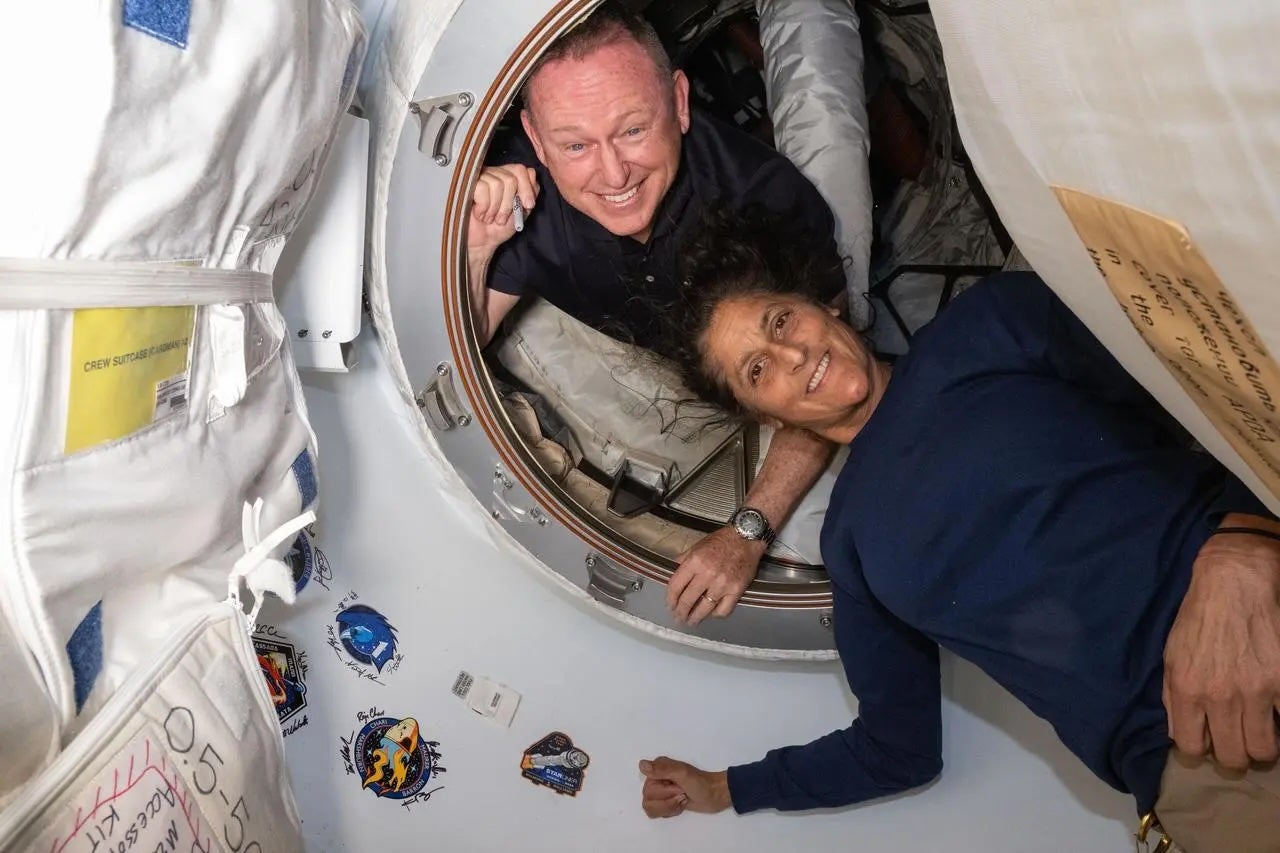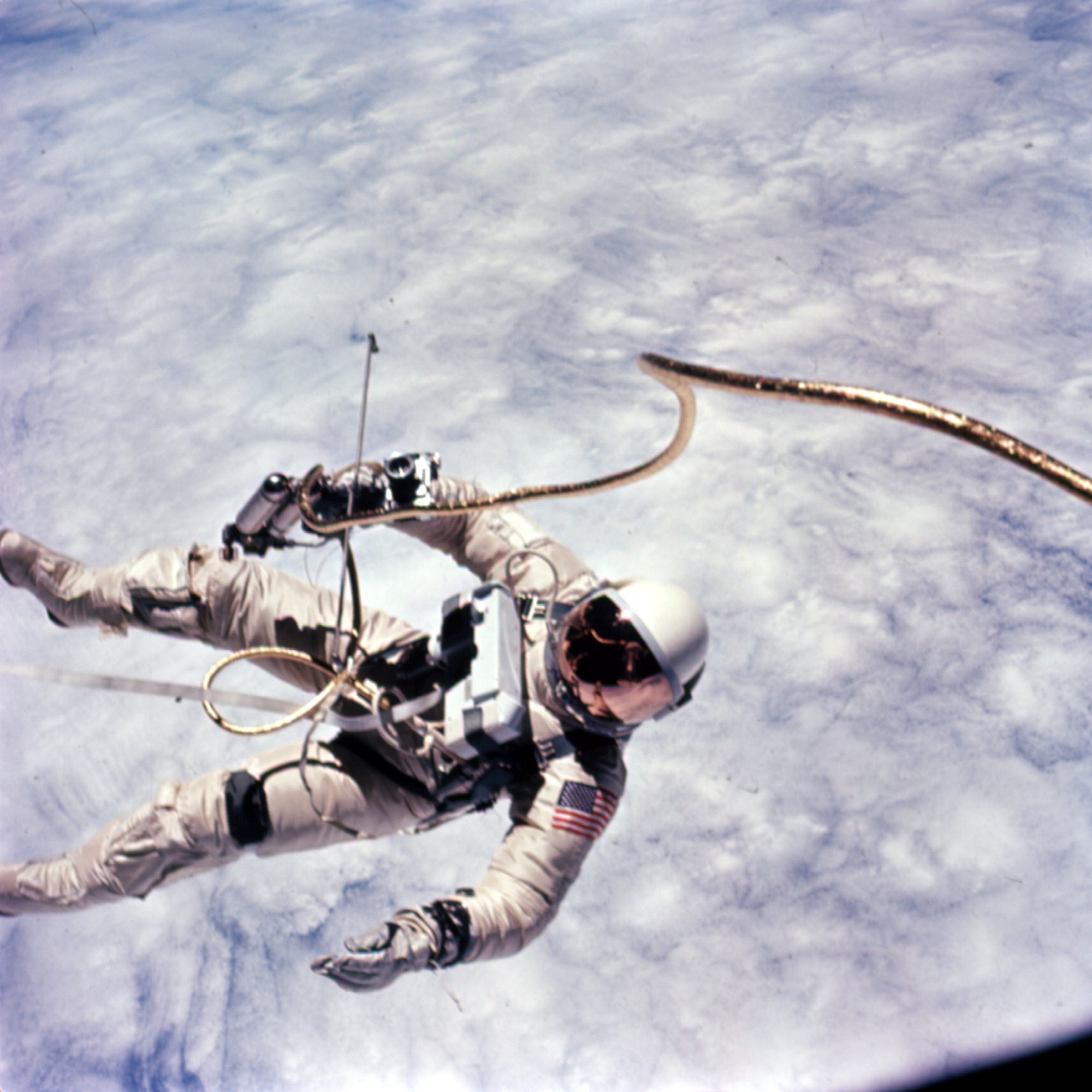Nasa astronauts forced to extend their stay on the ISS – but what’s it really like to be stranded in space?
It was an eight-day mission that is now set to last at least eight months – but the astronauts stuck in space because of the troubled Boeing Starliner insist they’re having a ‘great’ time, writes Andrew Griffin


It wasn’t clear how serious he was being. But it sounded like a nice time, the way one might describe a holiday in a postcard home, or the living conditions of a new family guinea pig.
“It’s great to be there, enjoying the environment, eating that great space food and being able to look out the window,” said Ken Bowersox, associate administrator of Nasa’s space operations mission directorate, in a press conference last month.
He was talking about two astronauts, Butch Wilmore and Suni Williams, the test pilots of the troubled Boeing Starliner. They left Earth on 5 June on what was supposed to be an eight-day mission to test that spacecraft – but after suffering problems before and during its launch, the Starliner ran into more on its way to the space station, and they are still not back almost eight months later.
In September – after intense scrutiny and considerations by Nasa – the Starliner detached from the International Space Station and returned to Earth. But Wilmore and Williams were not on board, after engineers at the space agency decided they could not be sure that it could carry them safely, and so opted for them to come home on a later SpaceX flight instead.

That decision ended almost three months of speculation about how the pair would get home. However, it also delayed their journey back dramatically because the SpaceX craft that will give them a lift has not yet even arrived at the space station.
The pair’s mission grew from eight days to eight months. Now they won’t return until the end of March or even April because of a delay in launching their replacements, according to Nasa, meaning the space station that was supposed to be a brief stop-off has now become a semi-permanent home.
In their early days on the space station, much of the pair’s time was spent monitoring Starliner, as engineers struggled to work out how it had gone wrong and whether it might be fixed. Even in its final days, they were still learning more about it – such as when Wilmore got in touch with mission control to report strange noises coming from the craft.
But as time has gone on, the pair have become integrated into the normal crew, which Williams has described as “great”. “We’ve been thoroughly busy up here, integrated right into the crew,” she said on a call in July.
“It feels like coming back home. It feels good to float around. It feels good to be in space and work up here with the International Space Station team.”
As with any unexpected stay, the pair arrived without the necessary clothes and other supplies for such a long mission, and early on they were forced to ration their clean clothes. However, a resupply mission arrived last month, bringing extra clothes and other supplies to ensure they‘re comfortable during their unexpected stay.

Beyond the obvious facts of being separated from your family and tumbling around in microgravity, the International Space Station does not sound like the worst place to live. On the bare facts, it likely beats many London flats for facilities and space, though they don’t have to deal with flying around the Earth at a speed of five miles per second.
The ISS has six sleeping quarters, two bathrooms and a 360-degree window for peering out into space and back down at Earth. The station also has a gym, which is key to the astronauts’ wellbeing – they spend at least two hours of each day exercising, to try and stave off the muscle wastage and other health problems that can come with living in low gravity.
The space is usually occupied by seven people, though there are 12 on board the ISS at the moment. (There are currently 19 people in space in total, but three of them are on China’s Tiangong space station, and four more are part of SpaceX’s private Polaris Dawn mission that this week conducted the first ever commercial spacewalk.)
The space food that Bowersox spoke so highly of has been one of the most focused parts of Nasa’s work over the past 60 or so years. The offering has become both more advanced and more various as space agencies have worked out new ways of preserving and serving food in orbit.
The first meal in space was eaten by the first human in space, Yuri Gagarin, who squeezed a tube full of beef and liver paste into his mouth and then followed it with a tube of chocolate sauce. The first American meal followed soon after, when John Glenn ate a tube of apple sauce.
Over time, Nasa found ways to choose and package food so that it was nutritious and flavoursome but also didn’t pose any risk to the astronaut or their equipment. Sandwiches, for instance, were quickly abandoned because they went stale and their crumbs could float around and find their way into the spacecraft’s parts.
Nasa now has an entire organisation – Space Food Systems Laboratory, based at the Johnson Space Center in Houston –that makes and packs food to be taken to the ISS. There are now more than 200 offerings, and astronauts can choose extras to take along if they need to.
There are no fridges for food on the space station, so instead the meals are often freeze dried and then rehydrated onboard. That doesn’t work for all foods, however, such as fresh fruits and vegetables. In recent years, space agencies have experimented with growing them on board, in part to provide fresh food for astronauts.
Even with their rearranged schedule, Williams and Wilmore will be far from breaking records for their journey. The longest amount of time spent on the International Space Station in one go came to an end in March 2022, when American Mark Vande Hei and Russian Pyotr Dubrov arrived back home after a 355-day stint.
Others stayed even longer on the previous Soviet space station Mir. Four in total stayed for longer than the pair, including Valeriy Polyakov who was on board for 437 days that came to an end in March 1995.






Join our commenting forum
Join thought-provoking conversations, follow other Independent readers and see their replies
Comments